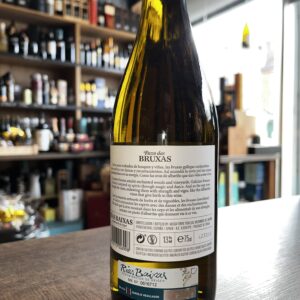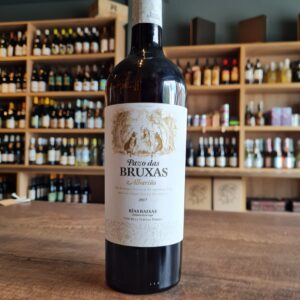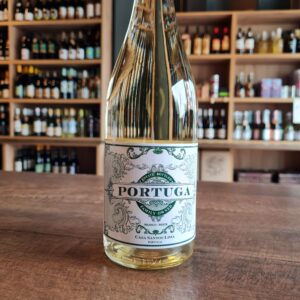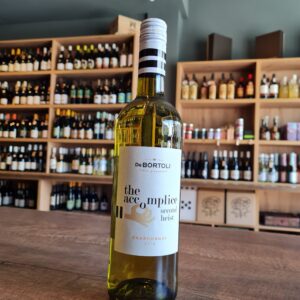-
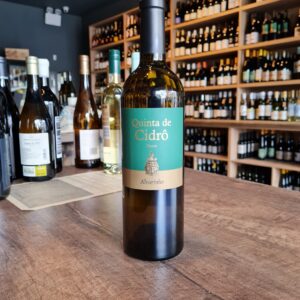 Quinta de Cidrô presents the first Alvarinho produced in the Douro, another superb result of the continuous innovation that takes place in the vineyards of the property. The idea to plant Alvarinho in the Douro came from their ambition to produce a high quality white monovarietal from a Portuguese grape variety. A wine marked by fine and delicate aromas of citrus fruit and orange blossom, which presents an excellent aromatic complexity. Expressive and personalized, it is above all a full-bodied Douro wine, revealing flavours that can be guessed at in the aroma. A long and distinct Alvarinho, determined by a crisp acidity and a tasty minerality.
Quinta de Cidrô presents the first Alvarinho produced in the Douro, another superb result of the continuous innovation that takes place in the vineyards of the property. The idea to plant Alvarinho in the Douro came from their ambition to produce a high quality white monovarietal from a Portuguese grape variety. A wine marked by fine and delicate aromas of citrus fruit and orange blossom, which presents an excellent aromatic complexity. Expressive and personalized, it is above all a full-bodied Douro wine, revealing flavours that can be guessed at in the aroma. A long and distinct Alvarinho, determined by a crisp acidity and a tasty minerality. -
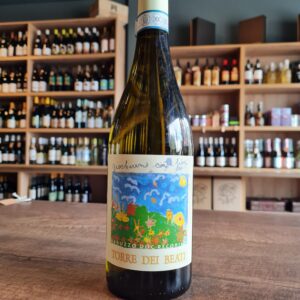 Pecorino We will play with the Flowers of Torre dei Beati born in the vineyards located on the hills at the foot of the Gran Sasso, in the heart of the Abruzzo region.It is produced exclusively with Pecorino grapes, recently recovered in Italy as an ancient grape. The Pecorino is a native vine of poor productivity and great enological interest, which is deserving the attention of the fans. Torre dei Beati uses traditional and non-intrusive winemaking techniques. After fermentation in stainless steel tanks at controlled temperature, the wine ages in steel before being bottled. It is characterized by a straw yellow color with golden reflections. The nose is fine and elegant, with hints of pear and white flowers, rounded by pleasant honeyed notes and hints of medicinal herbs. On the palate it is soft and with an excellent balance between alcohol, acidity and minerality. The wine has a long lasting and stimulating finish. Perfect to accompany aperitifs, appetizers and fish dishes, it is ideal in combination with white meats and first courses.
Pecorino We will play with the Flowers of Torre dei Beati born in the vineyards located on the hills at the foot of the Gran Sasso, in the heart of the Abruzzo region.It is produced exclusively with Pecorino grapes, recently recovered in Italy as an ancient grape. The Pecorino is a native vine of poor productivity and great enological interest, which is deserving the attention of the fans. Torre dei Beati uses traditional and non-intrusive winemaking techniques. After fermentation in stainless steel tanks at controlled temperature, the wine ages in steel before being bottled. It is characterized by a straw yellow color with golden reflections. The nose is fine and elegant, with hints of pear and white flowers, rounded by pleasant honeyed notes and hints of medicinal herbs. On the palate it is soft and with an excellent balance between alcohol, acidity and minerality. The wine has a long lasting and stimulating finish. Perfect to accompany aperitifs, appetizers and fish dishes, it is ideal in combination with white meats and first courses. -
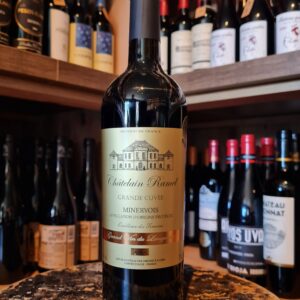 Dominated by Carignan, this is a Minervois which will wow the senses and really impress with its value for money. The fruit for the Ramel Grand Cuvee were sourced from the Domaine de la Baquiere Estate, within the heart of the Languedoc Wine Region. From 23 hectares of vineyard on the slopes of the Montagne Noire where the Ramel-Mazard family winemaking dates back to 1726, forming traditional methods of production, with the fruit harvested by hand and each grape variety vinified separately in stainless steel. This is a medium/full bodied with bright ruby edge. Interesting and attractive nose, sweet blackberry, plum notes with a smoky, meaty complexion. Cherry notes too. Medium weight palate with sweet blackberry fruit, mocha and cherry tones. Tannins are grippy but well balanced and the 14% alcohol well integrated. Would suit Duck very well, or slow cooked meats stew style dishes.
Dominated by Carignan, this is a Minervois which will wow the senses and really impress with its value for money. The fruit for the Ramel Grand Cuvee were sourced from the Domaine de la Baquiere Estate, within the heart of the Languedoc Wine Region. From 23 hectares of vineyard on the slopes of the Montagne Noire where the Ramel-Mazard family winemaking dates back to 1726, forming traditional methods of production, with the fruit harvested by hand and each grape variety vinified separately in stainless steel. This is a medium/full bodied with bright ruby edge. Interesting and attractive nose, sweet blackberry, plum notes with a smoky, meaty complexion. Cherry notes too. Medium weight palate with sweet blackberry fruit, mocha and cherry tones. Tannins are grippy but well balanced and the 14% alcohol well integrated. Would suit Duck very well, or slow cooked meats stew style dishes. -
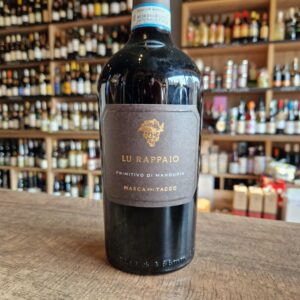 Primitivo is practically synonymous with Puglia and the south of Italy. If you truly want to experience the quality of a fine Primitivo di Manduria, try this wine. It must be said that the Primitivo di Manduria is slightly different from the rest of Puglia. Manduria has a privileged location, right in the middle of the Salento peninsula.This allows the marine breeze coming from both the Adriatic Sea and the Ionian Sea to refresh the vineyard. The soil is composed of limestone with iron oxide fossils, giving it a distinctive red color. This soil is also known as Terra Rossa and it is typical of the Mediterranean region.The climate is ideal too, with mild winters and extremely hot summers and according to Decanter, "Primitivo is the most sun-loving grape I have seen." It goes well with dark and white meat from the grill or from the oven. Also a pleasant red wine with pasta dishes with spicy sauces as well as spicy cheeses. Its elegance and structure make it a perfect wine for romantic evenings or important dinners
Primitivo is practically synonymous with Puglia and the south of Italy. If you truly want to experience the quality of a fine Primitivo di Manduria, try this wine. It must be said that the Primitivo di Manduria is slightly different from the rest of Puglia. Manduria has a privileged location, right in the middle of the Salento peninsula.This allows the marine breeze coming from both the Adriatic Sea and the Ionian Sea to refresh the vineyard. The soil is composed of limestone with iron oxide fossils, giving it a distinctive red color. This soil is also known as Terra Rossa and it is typical of the Mediterranean region.The climate is ideal too, with mild winters and extremely hot summers and according to Decanter, "Primitivo is the most sun-loving grape I have seen." It goes well with dark and white meat from the grill or from the oven. Also a pleasant red wine with pasta dishes with spicy sauces as well as spicy cheeses. Its elegance and structure make it a perfect wine for romantic evenings or important dinners -
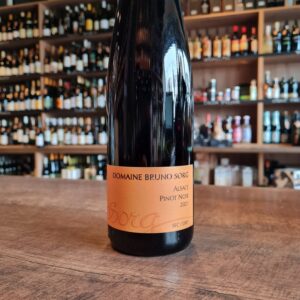 The late Bruno Sorg and his son François are responsible for some of the finest, richest and most concentrated wines in Alsace. The Sorg family have been producing wine in the Alsace since the 18th century, with this particular branch of it established in the late 1960s by Renée and the late Bruno Sorg. Alsace is becoming better known for and offering superb value in comparison to some Pinot from Burgundy. A complex Pinot, that has good fruit density, freshness along with a savoury dimension. Fantastic value!
The late Bruno Sorg and his son François are responsible for some of the finest, richest and most concentrated wines in Alsace. The Sorg family have been producing wine in the Alsace since the 18th century, with this particular branch of it established in the late 1960s by Renée and the late Bruno Sorg. Alsace is becoming better known for and offering superb value in comparison to some Pinot from Burgundy. A complex Pinot, that has good fruit density, freshness along with a savoury dimension. Fantastic value! -
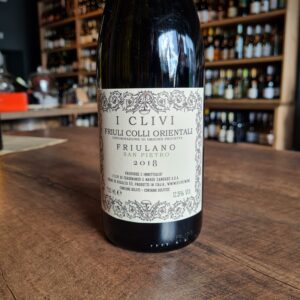 The wines of i Clivi are born in Friuli in between the Collio Goriziano and the eastern hills of Udine, named Colli Orientali, where, on sunny slopes – clivi meaning “slopes” – Altogether there is cultivated 12 hectares of certified organic vineyards planted with the indigenous varieties Ribolla, Friulano, Verduzzo, and Malvasia, whose only international grape is Merlot, a variety which found home in this area more than a century ago. Taking care of this important heritage of old vines, aged between 60 and 80 years, it is for Ferdinando and Mario Zanusso a reminder of the responsibility with which they guard and produce wine on this strip of land, giving the chance to express two distinct D.O.C. denominations, Collio, and Colli Orientali del Friuli, whose sensory difference is related exclusively to the microclimate. The low yields produced by these old vines give a natural concentration and complexity to the fruit they seek to transform naturally with spontaneous fermentation, maintaining the elegance and aromatic integrity through careful maturation in steel tanks for 50,000 bottles of varietal wines with great personality, distinguished grace, and delicacy.
The wines of i Clivi are born in Friuli in between the Collio Goriziano and the eastern hills of Udine, named Colli Orientali, where, on sunny slopes – clivi meaning “slopes” – Altogether there is cultivated 12 hectares of certified organic vineyards planted with the indigenous varieties Ribolla, Friulano, Verduzzo, and Malvasia, whose only international grape is Merlot, a variety which found home in this area more than a century ago. Taking care of this important heritage of old vines, aged between 60 and 80 years, it is for Ferdinando and Mario Zanusso a reminder of the responsibility with which they guard and produce wine on this strip of land, giving the chance to express two distinct D.O.C. denominations, Collio, and Colli Orientali del Friuli, whose sensory difference is related exclusively to the microclimate. The low yields produced by these old vines give a natural concentration and complexity to the fruit they seek to transform naturally with spontaneous fermentation, maintaining the elegance and aromatic integrity through careful maturation in steel tanks for 50,000 bottles of varietal wines with great personality, distinguished grace, and delicacy. -
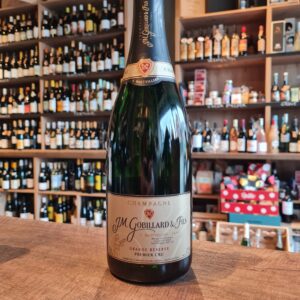 The Champagne house JM Gobillard & Fils is based in Hautvillers, a picturesque wine town in the heart of Champagne. The monk and cellar master Dom Pérignon discovered the first Champagne pearls in the Benedictine Abbey of Hautvillers around 1681 and thus made the small town the birthplace of Champagne. All three grape varieties of Champagne are carefully cultivated by hand on 30 hectares of our own vineyards - mainly in the Premier Cru vineyards of Hautvillers - under the supervision of Thierry Gobillard, oenologist and patron of the Champagne house "JM Gobillard & Fils". In addition, grapes from another 125 hectares of external vineyards are purchased from strictly controlled, quality-conscious top winegrowers. Committed to house tradition, Thierry Gobillard has full control over all of his grape requirements. With his name, he vouches for quality and uniformity, he is a guarantor of the highest perfection and a bastion in the fight against mediocrity. Thanks to the highest art of oenology, each champagne from the Champagne house "JM Gobillard & Fils" has a unique personality, so rich in expressions and appearances that you will be amazed! A votre sante! - Cheers!
The Champagne house JM Gobillard & Fils is based in Hautvillers, a picturesque wine town in the heart of Champagne. The monk and cellar master Dom Pérignon discovered the first Champagne pearls in the Benedictine Abbey of Hautvillers around 1681 and thus made the small town the birthplace of Champagne. All three grape varieties of Champagne are carefully cultivated by hand on 30 hectares of our own vineyards - mainly in the Premier Cru vineyards of Hautvillers - under the supervision of Thierry Gobillard, oenologist and patron of the Champagne house "JM Gobillard & Fils". In addition, grapes from another 125 hectares of external vineyards are purchased from strictly controlled, quality-conscious top winegrowers. Committed to house tradition, Thierry Gobillard has full control over all of his grape requirements. With his name, he vouches for quality and uniformity, he is a guarantor of the highest perfection and a bastion in the fight against mediocrity. Thanks to the highest art of oenology, each champagne from the Champagne house "JM Gobillard & Fils" has a unique personality, so rich in expressions and appearances that you will be amazed! A votre sante! - Cheers! -
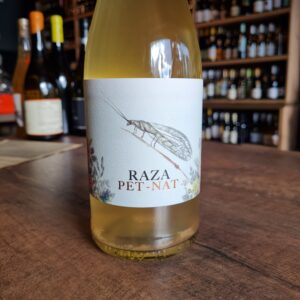 The concept of this label is to send the consumer to the botanical universe of the XVI century. A very unique style which is a tribute to nature and the living beings who look after it so well. A mixture of charcoal pencils with watercolor provides fresh, traditional, and natural air. The informative label on the side of the bottle is drawn in a vintage style referencing this era's aesthetics. The Lacewing or Chrysoperla (Raza)represents their holistic approach to viticulture. Its efficiency in biological control pest is remarkable and helps keep the vines free of pests.Pet Nat is an abbreviation for Pétillant Naturel, a naturally sparkling wine. The fermented wine is still bottled in the bottle, which stops the fermentation there, so a little CO2 and yeast precipitate is formed in the bottle. The wine is not cleaned, sweetened (no dosage) and the wine is now closed with a regular crown cap. The wine is made with natural yeast and uses minimal sulphites. Spontaneous fermentation ends in the bottle, as a result of which a pleasantly natural layer remains in the wine. This refreshing, sparkling wine is full of fruity and lively orchard flavors. The natural sediment makes the wine cloudy, while adding many interesting nuances to the taste, the wild yeast makes the wine tasty and easy to enjoy.
The concept of this label is to send the consumer to the botanical universe of the XVI century. A very unique style which is a tribute to nature and the living beings who look after it so well. A mixture of charcoal pencils with watercolor provides fresh, traditional, and natural air. The informative label on the side of the bottle is drawn in a vintage style referencing this era's aesthetics. The Lacewing or Chrysoperla (Raza)represents their holistic approach to viticulture. Its efficiency in biological control pest is remarkable and helps keep the vines free of pests.Pet Nat is an abbreviation for Pétillant Naturel, a naturally sparkling wine. The fermented wine is still bottled in the bottle, which stops the fermentation there, so a little CO2 and yeast precipitate is formed in the bottle. The wine is not cleaned, sweetened (no dosage) and the wine is now closed with a regular crown cap. The wine is made with natural yeast and uses minimal sulphites. Spontaneous fermentation ends in the bottle, as a result of which a pleasantly natural layer remains in the wine. This refreshing, sparkling wine is full of fruity and lively orchard flavors. The natural sediment makes the wine cloudy, while adding many interesting nuances to the taste, the wild yeast makes the wine tasty and easy to enjoy. -
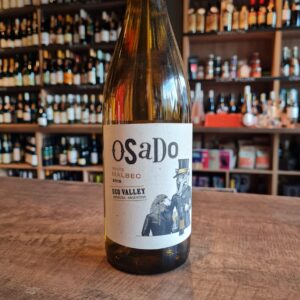 Being Osado or daring, is not being fearless, or not having second thoughts. Being Osado means living without prejudice, being free of any obligations and building your own way of life. Malbec brings a strong posture to this white wine and its aftertaste is long, fresh and clean. The grapes are harvested by hand in the cool of the morning, pressed under very low pressure so that no color has come off the grapes. The wine has been cold-consumed for 15 days and then matured in steel tanks on top of the precipitate for five months. This delicious wine is a very versatile food wine accompanied by grilled fish or asparagus, for example, and is also suitable as an aperitif as such. Grapes: Malbec 100%.
Being Osado or daring, is not being fearless, or not having second thoughts. Being Osado means living without prejudice, being free of any obligations and building your own way of life. Malbec brings a strong posture to this white wine and its aftertaste is long, fresh and clean. The grapes are harvested by hand in the cool of the morning, pressed under very low pressure so that no color has come off the grapes. The wine has been cold-consumed for 15 days and then matured in steel tanks on top of the precipitate for five months. This delicious wine is a very versatile food wine accompanied by grilled fish or asparagus, for example, and is also suitable as an aperitif as such. Grapes: Malbec 100%. -
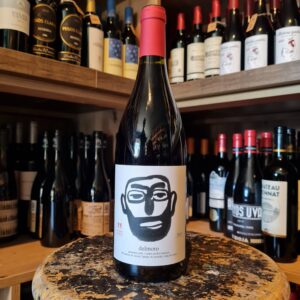 La Comarcal del Moro is part of a collaboration of two friends, Javi Revert and Victor Marqués, who first worked together at Celler del Roure. This wine comes from terroir specific vineyards to express the very best of the varieties they work with. Delmoro is predominantly Garnacha with some Bobal and Syrah in the blend, fermented separately, and aged in stainless steel and oak. All coming from a four hectare single vineyard. Rustic, but seductive, young but with some great lenght and complexity, this wine is not to be underestimated. Goes beautifully with poultry, pork and salmon.
La Comarcal del Moro is part of a collaboration of two friends, Javi Revert and Victor Marqués, who first worked together at Celler del Roure. This wine comes from terroir specific vineyards to express the very best of the varieties they work with. Delmoro is predominantly Garnacha with some Bobal and Syrah in the blend, fermented separately, and aged in stainless steel and oak. All coming from a four hectare single vineyard. Rustic, but seductive, young but with some great lenght and complexity, this wine is not to be underestimated. Goes beautifully with poultry, pork and salmon. -
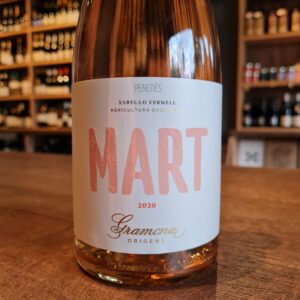 Biodynamic Rosé made from pink skinned Xarel.lo – a variety indigenous to the Penedès region that has been brought back from the brink of extinction. Mediterranean fruits and herbs. Delicate and complex. Recommended spicy dishes such as those found in Japanese, Nikkei, Caribbean and South American cuisine. Rice dishes and seafood. Excellent for aperitifs.
Biodynamic Rosé made from pink skinned Xarel.lo – a variety indigenous to the Penedès region that has been brought back from the brink of extinction. Mediterranean fruits and herbs. Delicate and complex. Recommended spicy dishes such as those found in Japanese, Nikkei, Caribbean and South American cuisine. Rice dishes and seafood. Excellent for aperitifs. -
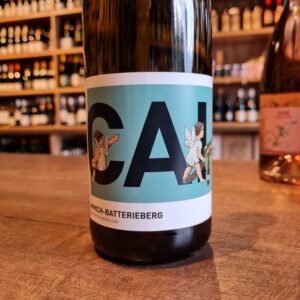 Immich-Batterieberg is one of the oldest wineries in the Mosel; originally founded by a Carolingian monastery, it can be traced back to the year 911. In 1495, the Immich family purchased the property, producing traditional dry and off-dry wines under their name for almost 500 years. The historical estate was then acquired in 2009 by Gernot Kollmann, one of Germany's finest up and comers. He is no stranger to the Mosel, having worked on many prestigious wineries in the region – Dr. Loosen, Weingut Van Volxem and Knebel. Since taking over, he has chosen to retain the long-standing tradition of the winery. The wines are once again produced in a dry or off-dry style, with sugar levels depending on each site, each vintage.80-percent of the vines are un-grafted and over 60 years old, and everything is worked organically. Intervention during vinification is also forbidden. A crisp, crunchy, keenly balanced, TOTALLY DRY trocken style Riesling.
Immich-Batterieberg is one of the oldest wineries in the Mosel; originally founded by a Carolingian monastery, it can be traced back to the year 911. In 1495, the Immich family purchased the property, producing traditional dry and off-dry wines under their name for almost 500 years. The historical estate was then acquired in 2009 by Gernot Kollmann, one of Germany's finest up and comers. He is no stranger to the Mosel, having worked on many prestigious wineries in the region – Dr. Loosen, Weingut Van Volxem and Knebel. Since taking over, he has chosen to retain the long-standing tradition of the winery. The wines are once again produced in a dry or off-dry style, with sugar levels depending on each site, each vintage.80-percent of the vines are un-grafted and over 60 years old, and everything is worked organically. Intervention during vinification is also forbidden. A crisp, crunchy, keenly balanced, TOTALLY DRY trocken style Riesling. -
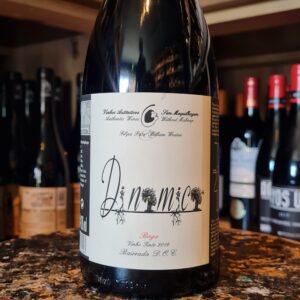 Filipa Pato is the confirmation of the old saying "son of fish knows how to swim". Although she followed the footsteps of her father Luís Pato, even in her academic training, Filipa always wanted to have her own world, her own project, where she would show her ideas, and go up with her own pulse. It was the 2001 harvest, a great year in Bairrada, which would provide all of this. That year, she decided to walk on her own feet, creating her dream. The success was immediate, and soon she rose to the status of one of the most brilliant winemakers in Portugal. The wines are the result of Filipa's innovative and brilliant spirit. They were quickly at the forefront of national and international criticism. In 2011, with her husband William Wouters, a prestigious Belgian Sommelier and owner of the Pazzo restaurant in Antwerp, Filipa receives the title "Newcomer of the year".
Filipa Pato is the confirmation of the old saying "son of fish knows how to swim". Although she followed the footsteps of her father Luís Pato, even in her academic training, Filipa always wanted to have her own world, her own project, where she would show her ideas, and go up with her own pulse. It was the 2001 harvest, a great year in Bairrada, which would provide all of this. That year, she decided to walk on her own feet, creating her dream. The success was immediate, and soon she rose to the status of one of the most brilliant winemakers in Portugal. The wines are the result of Filipa's innovative and brilliant spirit. They were quickly at the forefront of national and international criticism. In 2011, with her husband William Wouters, a prestigious Belgian Sommelier and owner of the Pazzo restaurant in Antwerp, Filipa receives the title "Newcomer of the year". -
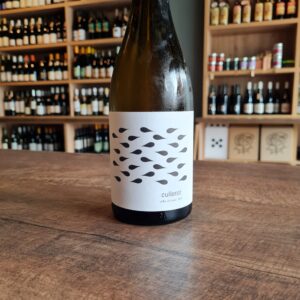 Celler del Roure is making very interesting wines with local grape varieties in the Valencia area. Many of these old, indigenous varieties are largely forgotten and Cullerot highlights three of them (Verdil, Tortosina, and Merseguera) together with Pedro Ximénez, Macabeo, Malvasía, and others. In addition to their focus on indigenous grape varieties, Celler del Roure is employing traditional vinifications methods: hand harvesting, fermenting with native yeasts in stone lagars, and aging in very old clay amphorae. Cullerot has a bit of skin contact, and is medium bodied with notes of stone fruit, tropical notes, apple skin, and clay-y minerality. A great, truly interesting, "almost-orange" skin contact white wine, for less than €20.
Celler del Roure is making very interesting wines with local grape varieties in the Valencia area. Many of these old, indigenous varieties are largely forgotten and Cullerot highlights three of them (Verdil, Tortosina, and Merseguera) together with Pedro Ximénez, Macabeo, Malvasía, and others. In addition to their focus on indigenous grape varieties, Celler del Roure is employing traditional vinifications methods: hand harvesting, fermenting with native yeasts in stone lagars, and aging in very old clay amphorae. Cullerot has a bit of skin contact, and is medium bodied with notes of stone fruit, tropical notes, apple skin, and clay-y minerality. A great, truly interesting, "almost-orange" skin contact white wine, for less than €20. -
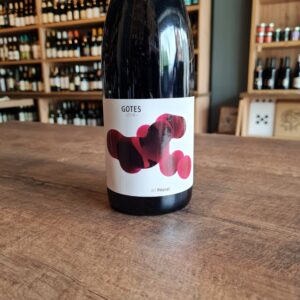 Gotes was the last to be incorporated into the Portal del Priorat's wine family, the Alfredo Arribas project in this denomination, and was envisioned to highlight the freshness of Priorat wines; gotes (drops) of freshness, like dewdrops. Don't expect to find in Gotes the more usual Priorat typicity, with profound maturity and intense minerality. Gotes reflects another type of Priorat wine, refined, in the French style (we mean 'French' as in Burgundy), with a fresh and floral profile. The typicity of Gotes is rooted in the countryside, in its notes of aromatic plants, and in that delightful warmth, because although fresh it is Mediterranean. Another special feature of Gotes is the polish and attention to detail it emits; it's an elegant wine; it has clearly been crafted by experts. If Gotes is refined on the nose, it's positively explosive on the palate! It grows and grows, with lots of volume and a very seductive sweetness and velvety texture. Gotes is fruit, but a very varied fruit cocktail: red fruits, black fruits, both fresh and jammy, the odd juicy stone fruit like mango (the Garnacha always leaves its mark) and fresh grapes that provide a citrusy touch. Ideal with dishes of a upper middle power taste. Will be excellent with a salad of figs and duck ham with Parmesan shavings. It will also be great taking with red meats, duck breast grilled or thigh kid with cider and soft alioli.
Gotes was the last to be incorporated into the Portal del Priorat's wine family, the Alfredo Arribas project in this denomination, and was envisioned to highlight the freshness of Priorat wines; gotes (drops) of freshness, like dewdrops. Don't expect to find in Gotes the more usual Priorat typicity, with profound maturity and intense minerality. Gotes reflects another type of Priorat wine, refined, in the French style (we mean 'French' as in Burgundy), with a fresh and floral profile. The typicity of Gotes is rooted in the countryside, in its notes of aromatic plants, and in that delightful warmth, because although fresh it is Mediterranean. Another special feature of Gotes is the polish and attention to detail it emits; it's an elegant wine; it has clearly been crafted by experts. If Gotes is refined on the nose, it's positively explosive on the palate! It grows and grows, with lots of volume and a very seductive sweetness and velvety texture. Gotes is fruit, but a very varied fruit cocktail: red fruits, black fruits, both fresh and jammy, the odd juicy stone fruit like mango (the Garnacha always leaves its mark) and fresh grapes that provide a citrusy touch. Ideal with dishes of a upper middle power taste. Will be excellent with a salad of figs and duck ham with Parmesan shavings. It will also be great taking with red meats, duck breast grilled or thigh kid with cider and soft alioli. -
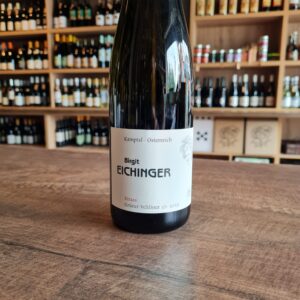 Weingut Birgit Eichinger was founded in 1992 by Birgit Eichinger and her husband Christian, who started out with roughly nine acres of vineyards shed from her parents' business, over time the vineyard area was expanded to 23 acres in the best traditional sites of Strass. This is a single-vineyard Grüner, from a vineyard whose loess (loose and sandy) soils and southward face are perfect for the cultivation of traditional Kamptal-style Grüner. The Birgit Eichinger Grüner Veltliner Strass Kamptal impresses with its elegantly dry taste. It was put on the bottle with only 1.8 grams of residual sugar. As one can of course expect with a wine, this Austrian naturally enchants with the finest balance in all dryness. Taste doesn't necessarily need sugar. On the palate, the texture of this light-footed white wine is wonderfully light. Due to the balanced fruit acidity, the Grüner Veltliner Rhinestone Kamptal flatters with velvety mouthfeel, without missing out on juicy liveliness. The finish comes with mineral notes of the soils dominated by loess soil and sandstone.
Weingut Birgit Eichinger was founded in 1992 by Birgit Eichinger and her husband Christian, who started out with roughly nine acres of vineyards shed from her parents' business, over time the vineyard area was expanded to 23 acres in the best traditional sites of Strass. This is a single-vineyard Grüner, from a vineyard whose loess (loose and sandy) soils and southward face are perfect for the cultivation of traditional Kamptal-style Grüner. The Birgit Eichinger Grüner Veltliner Strass Kamptal impresses with its elegantly dry taste. It was put on the bottle with only 1.8 grams of residual sugar. As one can of course expect with a wine, this Austrian naturally enchants with the finest balance in all dryness. Taste doesn't necessarily need sugar. On the palate, the texture of this light-footed white wine is wonderfully light. Due to the balanced fruit acidity, the Grüner Veltliner Rhinestone Kamptal flatters with velvety mouthfeel, without missing out on juicy liveliness. The finish comes with mineral notes of the soils dominated by loess soil and sandstone. -
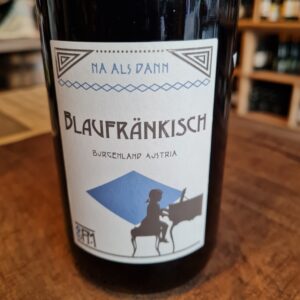 Blaufränkisch equals Austria. It is one of those typical, local, emerging grapes that have put Austria on the international wine market in recent years. Spicy nose with notes of ripe fruit such as currants and blackberries. The tannins are soft but present enough to structure the wine.All combines in a high-quality example of typical Blaufränkisch.
Blaufränkisch equals Austria. It is one of those typical, local, emerging grapes that have put Austria on the international wine market in recent years. Spicy nose with notes of ripe fruit such as currants and blackberries. The tannins are soft but present enough to structure the wine.All combines in a high-quality example of typical Blaufränkisch. -
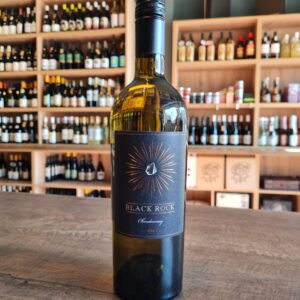 Black Rock is part of the Bronco Wine Company, which was formed in 1973 by Fred, Joseph and John Franzia. Since the start, they have been clear that the goal is to make wines for consumption, rather than for storage. At the same time, the quality must be as high as possible, at the lowest possible price. The name Bronco is a merger of brother and cousin after the brothers Fred and Joseph and their cousin John. Attractive tones of tropical fruit and a slightly spicy vanilla tone. Elegant and medium-bodied, with a nice balance and long aftertaste. Serve around 12 -14 ° C with chicken satay, or other dishes on white meat, a spicy stir-fry with noodles, fish or salad. Enjoy
Black Rock is part of the Bronco Wine Company, which was formed in 1973 by Fred, Joseph and John Franzia. Since the start, they have been clear that the goal is to make wines for consumption, rather than for storage. At the same time, the quality must be as high as possible, at the lowest possible price. The name Bronco is a merger of brother and cousin after the brothers Fred and Joseph and their cousin John. Attractive tones of tropical fruit and a slightly spicy vanilla tone. Elegant and medium-bodied, with a nice balance and long aftertaste. Serve around 12 -14 ° C with chicken satay, or other dishes on white meat, a spicy stir-fry with noodles, fish or salad. Enjoy -
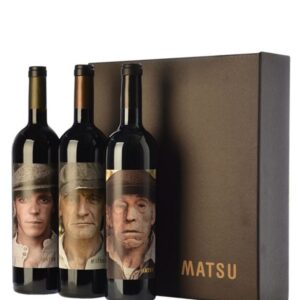 Matsu, the Japanese word for 'wait', pays homage to the generations of devoted wine makers. The images of the real-life wine-producers decorate the bottle and represent the essence of each of the wines. Picaro means 'rogue' or 'rascal', and this rapscallion of a wine is a youthful interpretation of the Toro region's style. El Recio translates as 'the tough guy', and is a more serious, mature wine, made from the product of some of Toro's oldest vines. 'The Old One' of the Matsu range, made from the fruit of selected Tinta de Toro vines, averaging 110 years of age - presented in an original gift box.
Matsu, the Japanese word for 'wait', pays homage to the generations of devoted wine makers. The images of the real-life wine-producers decorate the bottle and represent the essence of each of the wines. Picaro means 'rogue' or 'rascal', and this rapscallion of a wine is a youthful interpretation of the Toro region's style. El Recio translates as 'the tough guy', and is a more serious, mature wine, made from the product of some of Toro's oldest vines. 'The Old One' of the Matsu range, made from the fruit of selected Tinta de Toro vines, averaging 110 years of age - presented in an original gift box. -
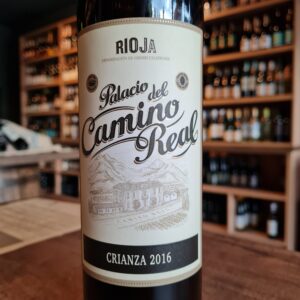 Palacio del Camino Real winery is located in the Najerilla Valley in Rioja. Isolated by the absence of railways and therefore the big wineries, the Najerilla Valley has maintained a tradition of small vineyards, consistently producing fruit of extraordinary freshness and quality. Palacio del Camino Real Crianza is a return to the essence of Rioja wines from the beginning of the 20th century in which Garnacha was the protagonist and a small percentage of white grapes could also be found. They are fresh, elegant, round and friendly wines. Palacio del Camino Real Crianza, is a red wine with an attractive ruby red color that impresses with its complex nose in which the nuances of its aging are perfectly integrated with the freshness and intensity of its chosen grapes. In the mouth it is a wine, it is a fresh, friendly, balanced wine with a long aftertaste.
Palacio del Camino Real winery is located in the Najerilla Valley in Rioja. Isolated by the absence of railways and therefore the big wineries, the Najerilla Valley has maintained a tradition of small vineyards, consistently producing fruit of extraordinary freshness and quality. Palacio del Camino Real Crianza is a return to the essence of Rioja wines from the beginning of the 20th century in which Garnacha was the protagonist and a small percentage of white grapes could also be found. They are fresh, elegant, round and friendly wines. Palacio del Camino Real Crianza, is a red wine with an attractive ruby red color that impresses with its complex nose in which the nuances of its aging are perfectly integrated with the freshness and intensity of its chosen grapes. In the mouth it is a wine, it is a fresh, friendly, balanced wine with a long aftertaste. -
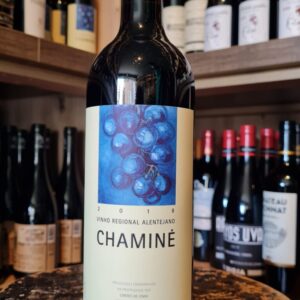 In 1988, A Danish-American couple, Hans and Carrie Jorgensen set out in a sailboat to find a place to start a family and plant vines. They came to Alentejo and they found “Cortes de Cima.” It was just a barren land and a few abandoned buildings. But Carrie, of Portuguese ancestry, said the landscape reminded her of California, her homeland. Hans, who was born in Denmark, fell in love with the Mediterranean sun. Their first wine was "born" in 1998 and the many successful vintages which followed as well as their pioneering spirit have put Cortes de Cima on the map. The main grape used is Aragonez (Spanish call it Tempranillo). It has a overt nose of fresh cherries, red plum, dark fruits and a lick of black liquorice. It is vibrant and well-rounded on the palate with good acidity and body. There is so much to love about this wine. One of my favourites enjoy!!
In 1988, A Danish-American couple, Hans and Carrie Jorgensen set out in a sailboat to find a place to start a family and plant vines. They came to Alentejo and they found “Cortes de Cima.” It was just a barren land and a few abandoned buildings. But Carrie, of Portuguese ancestry, said the landscape reminded her of California, her homeland. Hans, who was born in Denmark, fell in love with the Mediterranean sun. Their first wine was "born" in 1998 and the many successful vintages which followed as well as their pioneering spirit have put Cortes de Cima on the map. The main grape used is Aragonez (Spanish call it Tempranillo). It has a overt nose of fresh cherries, red plum, dark fruits and a lick of black liquorice. It is vibrant and well-rounded on the palate with good acidity and body. There is so much to love about this wine. One of my favourites enjoy!!


